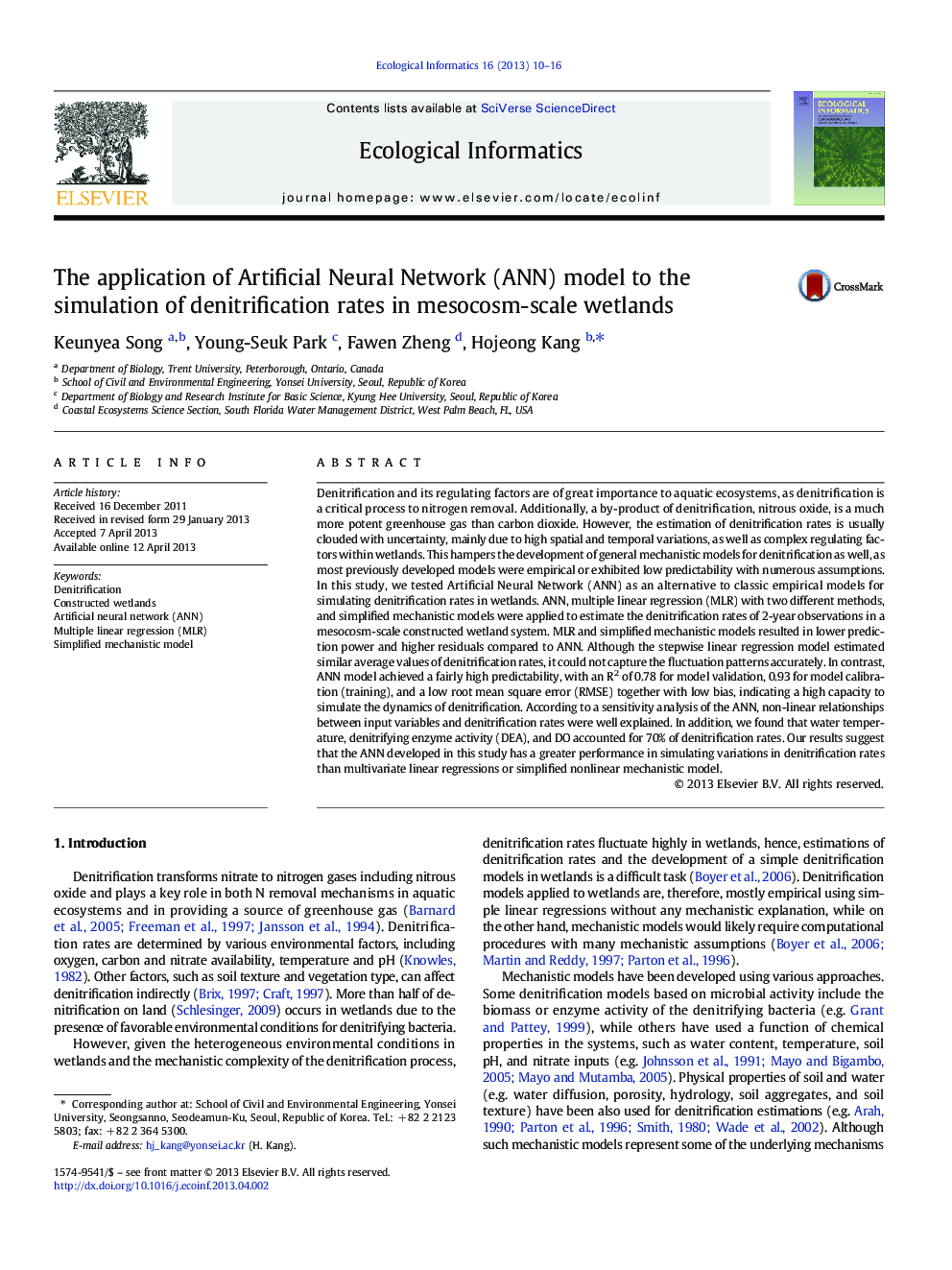| کد مقاله | کد نشریه | سال انتشار | مقاله انگلیسی | نسخه تمام متن |
|---|---|---|---|---|
| 4374976 | 1617216 | 2013 | 7 صفحه PDF | دانلود رایگان |
عنوان انگلیسی مقاله ISI
The application of Artificial Neural Network (ANN) model to the simulation of denitrification rates in mesocosm-scale wetlands
دانلود مقاله + سفارش ترجمه
دانلود مقاله ISI انگلیسی
رایگان برای ایرانیان
کلمات کلیدی
موضوعات مرتبط
علوم زیستی و بیوفناوری
علوم کشاورزی و بیولوژیک
بوم شناسی، تکامل، رفتار و سامانه شناسی
پیش نمایش صفحه اول مقاله

چکیده انگلیسی
Denitrification and its regulating factors are of great importance to aquatic ecosystems, as denitrification is a critical process to nitrogen removal. Additionally, a by-product of denitrification, nitrous oxide, is a much more potent greenhouse gas than carbon dioxide. However, the estimation of denitrification rates is usually clouded with uncertainty, mainly due to high spatial and temporal variations, as well as complex regulating factors within wetlands. This hampers the development of general mechanistic models for denitrification as well, as most previously developed models were empirical or exhibited low predictability with numerous assumptions. In this study, we tested Artificial Neural Network (ANN) as an alternative to classic empirical models for simulating denitrification rates in wetlands. ANN, multiple linear regression (MLR) with two different methods, and simplified mechanistic models were applied to estimate the denitrification rates of 2-year observations in a mesocosm-scale constructed wetland system. MLR and simplified mechanistic models resulted in lower prediction power and higher residuals compared to ANN. Although the stepwise linear regression model estimated similar average values of denitrification rates, it could not capture the fluctuation patterns accurately. In contrast, ANN model achieved a fairly high predictability, with an R2 of 0.78 for model validation, 0.93 for model calibration (training), and a low root mean square error (RMSE) together with low bias, indicating a high capacity to simulate the dynamics of denitrification. According to a sensitivity analysis of the ANN, non-linear relationships between input variables and denitrification rates were well explained. In addition, we found that water temperature, denitrifying enzyme activity (DEA), and DO accounted for 70% of denitrification rates. Our results suggest that the ANN developed in this study has a greater performance in simulating variations in denitrification rates than multivariate linear regressions or simplified nonlinear mechanistic model.
ناشر
Database: Elsevier - ScienceDirect (ساینس دایرکت)
Journal: Ecological Informatics - Volume 16, July 2013, Pages 10-16
Journal: Ecological Informatics - Volume 16, July 2013, Pages 10-16
نویسندگان
Keunyea Song, Young-Seuk Park, Fawen Zheng, Hojeong Kang,